Extracellular norepinephrine clearance by the norepinephrine transporter is required for skeletal homeostasis
- PMID: 24005671
- PMCID: PMC3798479
- DOI: 10.1074/jbc.M113.481309
Extracellular norepinephrine clearance by the norepinephrine transporter is required for skeletal homeostasis
Abstract
Changes in bone remodeling induced by pharmacological and genetic manipulation of β-adrenergic receptor (βAR) signaling in osteoblasts support a role of sympathetic nerves in the regulation of bone remodeling. However, the contribution of endogenous sympathetic outflow and nerve-derived norepinephrine (NE) to bone remodeling under pathophysiological conditions remains unclear. We show here that differentiated osteoblasts, like neurons, express the norepinephrine transporter (NET), exhibit specific NE uptake activity via NET and can catabolize, but not generate, NE. Pharmacological blockade of NE transport by reboxetine induced bone loss in WT mice. Similarly, lack of NE reuptake in norepinephrine transporter (Net)-deficient mice led to reduced bone formation and increased bone resorption, resulting in suboptimal peak bone mass and mechanical properties associated with low sympathetic outflow and high plasma NE levels. Last, daily sympathetic activation induced by mild chronic stress was unable to induce bone loss, unless NET activity was blocked. These findings indicate that the control of endogenous NE release and reuptake by presynaptic neurons and osteoblasts is an important component of the complex homeostatic machinery by which the sympathetic nervous system controls bone remodeling. These findings also suggest that drugs antagonizing NET activity, used for the treatment of hyperactivity disorders, may have deleterious effects on bone accrual.
Keywords: ADHD; Bone Remodeling; Gene Knockout; Mouse; Nerve; Neurotransmitter Transport; Norepinephrine Transporter; Osteoblasts; Sympathetic Nervous System.
Figures
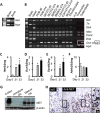

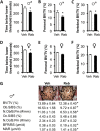

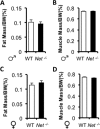
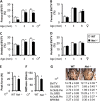
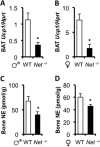

Similar articles
-
Postinfarct sympathetic hyperactivity differentially stimulates expression of tyrosine hydroxylase and norepinephrine transporter.Am J Physiol Heart Circ Physiol. 2008 Jan;294(1):H99-H106. doi: 10.1152/ajpheart.00533.2007. Epub 2007 Oct 19. Am J Physiol Heart Circ Physiol. 2008. PMID: 17951370
-
Norepinephrine transporter expression in cholinergic sympathetic neurons: differential regulation of membrane and vesicular transporters.Dev Biol. 2000 Apr 1;220(1):85-96. doi: 10.1006/dbio.2000.9631. Dev Biol. 2000. PMID: 10720433
-
Dynamic Mechanism of Norepinephrine Reuptake and Antidepressants Blockade Regulated by Membrane Potential.J Chem Theory Comput. 2025 Mar 11;21(5):2780-2797. doi: 10.1021/acs.jctc.4c01775. Epub 2025 Feb 24. J Chem Theory Comput. 2025. PMID: 39992630
-
The norepinephrine transporter in physiology and disease.Handb Exp Pharmacol. 2006;(175):485-524. doi: 10.1007/3-540-29784-7_20. Handb Exp Pharmacol. 2006. PMID: 16722247 Review.
-
The promises and pitfalls of reboxetine.CNS Drug Rev. 2003 Winter;9(4):327-42. doi: 10.1111/j.1527-3458.2003.tb00258.x. CNS Drug Rev. 2003. PMID: 14647527 Free PMC article. Review.
Cited by
-
Beta 2 Adrenergic Receptor Selective Antagonist Enhances Mechanically Stimulated Bone Anabolism in Aged Mice.JBMR Plus. 2022 Dec 27;7(2):e10712. doi: 10.1002/jbm4.10712. eCollection 2023 Feb. JBMR Plus. 2022. PMID: 36751418 Free PMC article.
-
Methylphenidate-effects on orthodontic tooth movement, orthodontically induced and nonorthodontic root resorption? : A micro-computed tomography and immunohistochemical analysis.J Orofac Orthop. 2025 Jan 2. doi: 10.1007/s00056-024-00567-6. Online ahead of print. J Orofac Orthop. 2025. PMID: 39747652 English.
-
Crosstalk between Bone and Nerves within Bone.Adv Sci (Weinh). 2021 Feb 10;8(7):2003390. doi: 10.1002/advs.202003390. eCollection 2021 Apr. Adv Sci (Weinh). 2021. PMID: 33854888 Free PMC article. Review.
-
The Role of Sympathetic Nerves in Osteoporosis: A Narrative Review.Biomedicines. 2022 Dec 23;11(1):33. doi: 10.3390/biomedicines11010033. Biomedicines. 2022. PMID: 36672541 Free PMC article. Review.
-
Cortical bone is an extraneuronal site of norepinephrine uptake in adult mice.Bone Rep. 2018 Nov 24;9:188-198. doi: 10.1016/j.bonr.2018.11.002. eCollection 2018 Dec. Bone Rep. 2018. PMID: 30581894 Free PMC article.
References
-
- Elefteriou F., Ahn J. D., Takeda S., Starbuck M., Yang X., Liu X., Kondo H., Richards W. G., Bannon T. W., Noda M., Clement K., Vaisse C., Karsenty G. (2005) Leptin regulation of bone resorption by the sympathetic nervous system and CART. Nature 434, 514–520 - PubMed
-
- Franquinho F., Liz M. A., Nunes A. F., Neto E., Lamghari M., Sousa M. M. (2010) Neuropeptide Y and osteoblast differentiation. The balance between the neuro-osteogenic network and local control. FEBS J. 277, 3664–3674 - PubMed
-
- Lee N. J., Herzog H. (2009) NPY regulation of bone remodelling. Neuropeptides 43, 457–463 - PubMed
-
- Fonseca T. L., Jorgetti V., Costa C. C., Capelo L. P., Covarrubias A. E., Moulatlet A. C., Teixeira M. B., Hesse E., Morethson P., Beber E. H., Freitas F. R., Wang C. C., Nonaka K. O., Oliveira R., Casarini D. E., Zorn T. M., Brum P. C., Gouveia C. H. (2011) Double disruption of α2A- and α2C-adrenoceptors results in sympathetic hyperactivity and high-bone-mass phenotype. J. Bone Miner. Res. 26, 591–603 - PubMed
-
- Li H., Fong C., Chen Y., Cai G., Yang M. (2010) β-Adrenergic signals regulate adipogenesis of mouse mesenchymal stem cells via cAMP/PKA pathway. Mol. Cell. Endocrinol. 323, 201–207 - PubMed
Publication types
MeSH terms
Substances
Grants and funding
LinkOut - more resources
Full Text Sources
Other Literature Sources
Molecular Biology Databases

